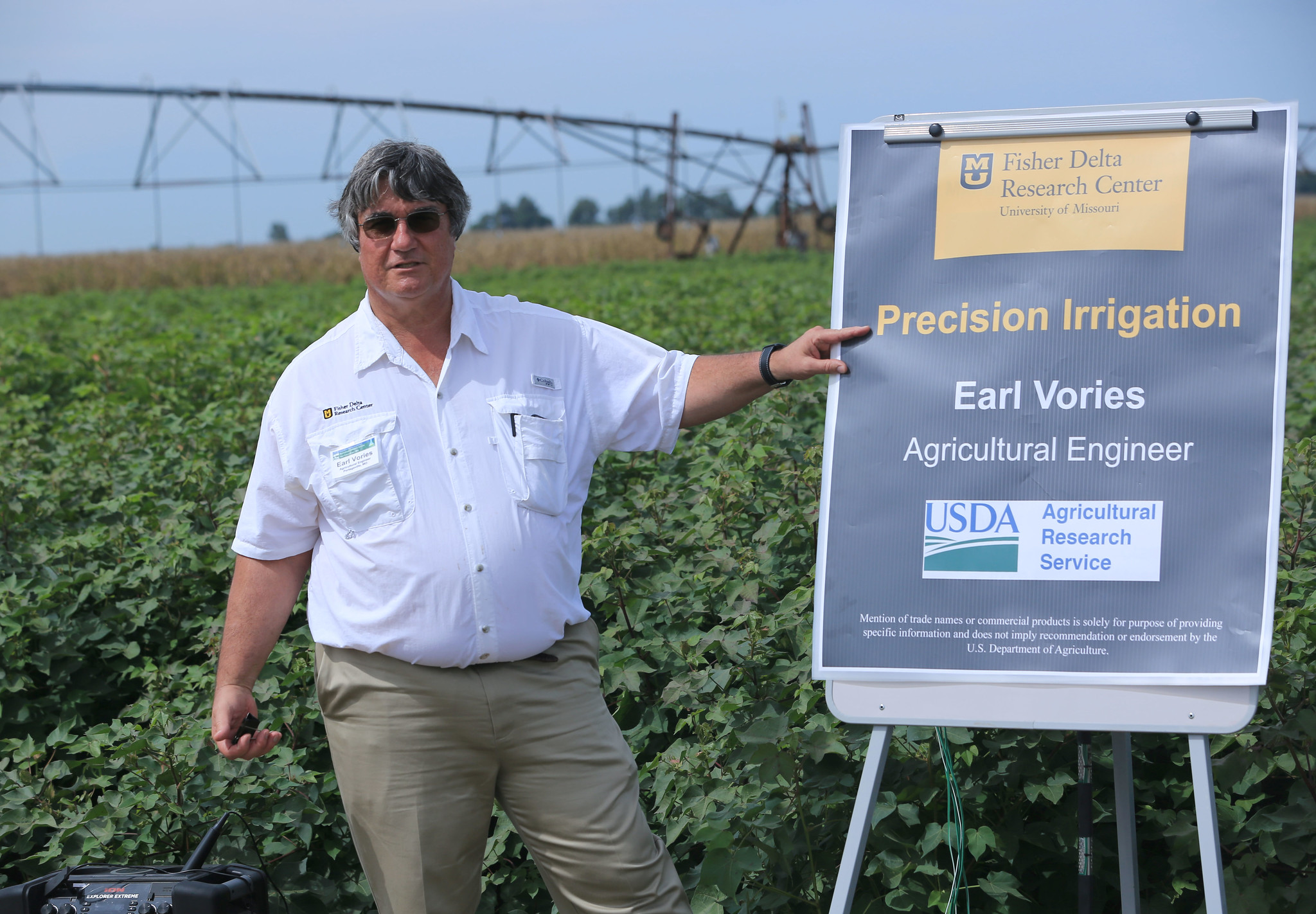
The soils in southeast Missouri, including those at the Fisher Delta Research Center in Portageville, Mo., allow for a wide variety of research studies and field trials. Soil variability in that part of the state creates opportunities for researchers to better understand the uniqueness of those soils and how best to manage them.
Along with soil variability, southeast Missouri also features unpredictable weather, where rainfall amounts vary throughout the growing season and from year to year.
Earl Vories, an agricultural engineer with USDA-ARS, has been studying irrigation on the variable soils at the Fisher Delta Research Center, with a focus during the past five years on variable rate irrigation in cotton fields.
“For a producer, the highly variable soils can be complicated to manage, and that’s why projects of this nature are incredibly valuable,” Vories said. “From a research standpoint, this variability is important because we get to really dig in and study these soils, as well as the best practices to manage them.”
Irrigation is the process of applying a controlled amount of water to a field to aid crop production. Center pivot irrigation has been around for decades and has allowed farmers the opportunity to precisely manage the water in their fields.
“You’ve always been able to vary the water in a field to an extent with center pivot irrigation, as you can speed up and slow down the machine as it moves through the field,” Vories said. “That may not be enough variation depending on the particular field you’re in.”
Variable rate technology, when related to irrigation, allows for the targeted application of water based on data that is collected by sensors, maps and GPS.
“For variable rate applications in general, we’ve been using that technology on fertilizer and growth regulators in cotton for years,” Vories said. “You can spend the money to put out variable rate fertilizer or other variable rate products, but if you’re not putting the right amount of water on, some of that money could be wasted because you’re not going to get the benefit you want.
“With variable rate irrigation, it allows you to, like other inputs, put exactly what’s needed at each part of the field.”
The variable rate irrigation system Vories uses was developed by a USDA-ARS group in Texas. While Vories is studying the system on cotton in Missouri, a group in South Carolina is researching the system on corn and soybean research is being conducted in Mississippi with the same system.
The variable rate irrigation technology that Vories has been researching includes sensors in the soil and on the center pivot. Those sensors collect data that is needed to prepare the site-specific prescriptions for the field. The prescriptions tell the system how much water is needed at each location in the field at a given time.
“We go through the field once with the water turned off,” Vories said. “We then go back through the field with a prescription based on the data we received when we first went through without the water. For the areas where we need water, the sensors detect that need and the system provides the necessary water for the crop.”
Vories said the system includes moisture sensors installed in the soil, as well as infrared thermometers mounted on the pivots.
“These two systems are a check on each other,” Vories said. “A dry crop is going to be hotter than a well-watered crop. So, if a field features spots with dry crops, the thermometers will flag that issue. Similarly, if there is a lack of soil moisture, the soil sensors will pick that up. If one of the sensors doesn’t detect the stress, the other serves as a backup.
“With our humid climate in southeast Missouri, the thermometers aren’t always as reliable as we want. That’s why it’s so important for us to also get data from our soil moisture sensors.”
Vories said long-term research is needed to get a better picture of variable rate irrigation and its value to farmers. As the weather changes rapidly each year in that part of the state, short-term research doesn’t always give the entire picture.
“Some years we don’t need much irrigation, but there are years where we need quite a bit,” Vories said. “The importance of variable rate irrigation is that you aren’t wasting water where you don’t need it. This is a good complement to the other variable rate systems that we encourage farmers to use.”